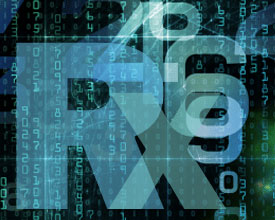The healthcare industry has all sorts of data that is just waiting to be analyzed and dissected – electronic health care systems (EHR), imaging, electronic prescribing, health care claims, public health reports and wellness apps.

Analysis of this huge amount of data has a great deal of promise for an industry that is looking for ways to reduce costs, boost efficiency and to provide more care. There is no doubt that some of these benefits will be realized, but much of this data is coming from vastly different, often proprietary systems that makes collecting and analyzing the reams of information a big challenge.
For the most part, much of the data that comes from healthcare organizations comes from various clinical, financial or operational computer applications. Each type of this data has specific uses.
Clinical data can improve the quality of care and can ease population health management. Financial data can help hospitals to do cost analyses and operational data looks at facilities management and the utilization of resources.
When you put all of this together, organizations in health care can begin to assess the bigger issues, such as staffing requirements, quality of care and efficiency. That is why some business health professionals, such as Laura Madsen at Lancet Software, sees no real need to differentiate between the disparate types of data sources. She says that data is just data, and at the end of the day, it’s just computer bits and types. If people are all good data professionals, they really should be integrating the business and clinical data all the time.
Of course, health care companies cannot analyze all of this data without collecting it in the first place. In health care, there are several problems that make this more complicated. As much as 85% of the data in health care is not structured, whether it is on paper or in fields that have to be abstracted manually.
But when it comes to health care business intelligence, or BI, size really does matter. The biggest health care providers in the country, such as Kaiser Permanente, have been collecting and analyzing data for a very long time. Most large companies are able to deal with all of the ata, but many smaller companies struggle to figure out what to do with all the data that is coming in.
TED Talk Special Feature
Collecting global health data was an imperfect science: Workers tramped through villages to knock on doors and ask questions, wrote the answers on paper forms, then input the data — and from this gappy information, countries would make huge decisions. Data geek Joel Selanikio talks through the sea change in collecting health data in the past decade — starting with the Palm Pilot and Hotmail, and now moving into the cloud.
Many companies will focus on BI regarding regulatory reporting requirements. This can make sense, as medical centers have to file as many as 1000 reports each year to various government agencies. With this type of need, it is hard for an organization to take next steps and understand how data in all of those reports can be best utilized to push operational efficiencies and other various institutional improvements.
One way to deal with the data is to do assessments of the health needs of a patient population. This can help a health care organization come up with methods of service delivery, and also identifying care gaps and even predicting which person is going to become seriously ill. Also, evaluating the performance of providers can really help to drive quality improvement, and also show why quality of care can vary.
Keep in mind that not all health care analytic systems have to be extremely complex. At Springhill Memorial Hospital in Alabama, a medication dispensing system update came with a system called Pandora Clinicals, which is an analytic package that helps the employees to cut down narcotics diversions.
The software is from Omnicell, and it tracks which employee takes out narcotics from the cabinet and when. Monthly reports then help management to find outliers, and who is dispensing more medication than others. At worst, this could mean that an employee is taking the narcotics for personal use or sale, but it also may mean that a nurse is just being more proactive in treating the pain of a patient.
The bottom line is that having more data on hand is going to improve the health care industry. You really cannot manage what you cannot measure, and this is especially true in accountable care.










